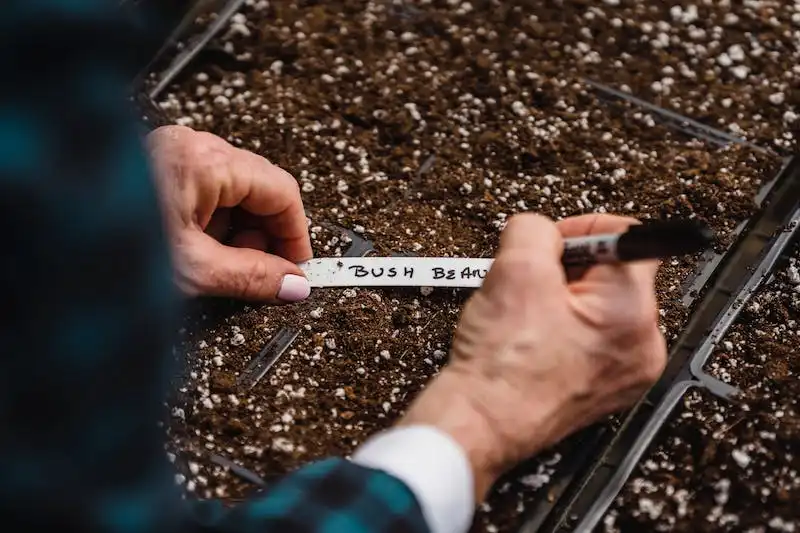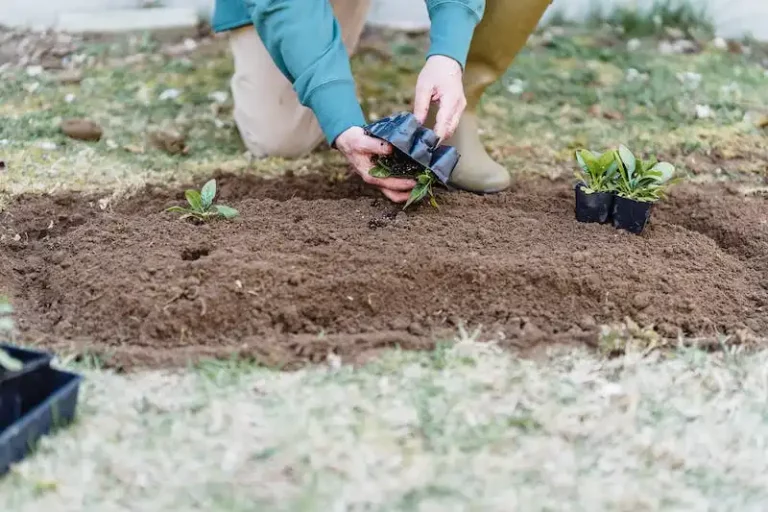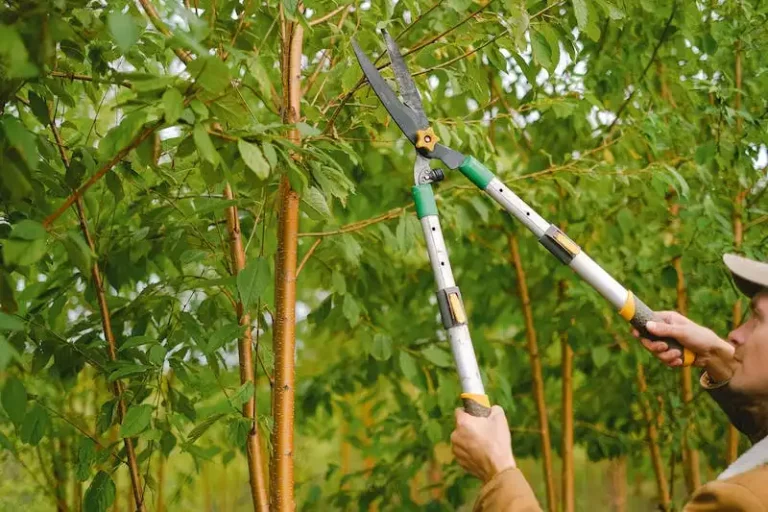Strawberries are a popular and delicious fruit that can be grown in gardens and containers. Whether you’re new to gardening or an experienced green thumb, knowing when to plant strawberries is crucial for successful growth. Strawberries are typically planted in the spring, with varieties that can be harvested throughout the season. But before you start planting, there are a few important tips to keep in mind.
First, it’s important to select a site that receives full sun for at least 6 hours a day. Strawberries thrive in sunny conditions and this will ensure healthy growth and high yields. It’s also important to choose a variety of strawberry plants that will do well in your climate. Some varieties are better suited for colder climates, while others are more tolerant of heat.
Once you’ve selected the right variety, it’s time to prepare the soil. Start by removing any weeds or grass from the planting area. Dig in a generous amount of compost or well-rotted manure to improve the soil’s fertility. Incorporate a nitrogen-rich fertilizer into the soil to feed the strawberry plants throughout the growing season. This will help promote healthy growth and ensure a bountiful harvest.
When planting strawberries, it’s important to space them correctly. Leave about 12-18 inches between each plant, with rows spaced about 2.5-3 feet apart. This ensures adequate air circulation and helps prevent the spread of diseases and fungus. Plant the strawberries with the crown at soil level, being careful not to bury it.
Mulching is an important step in maintaining healthy strawberry plants. Apply a layer of straw or other organic mulch around the plants, leaving a small space around the crown. Mulching helps conserve soil moisture, suppresses weeds, and protects the plants from rotting and diseases. Water the plants regularly, keeping the soil evenly moist throughout the growing season.
After planting, it’s important to maintain the strawberry plants by providing regular care and maintenance. Remove any runners or unwanted shoots to prevent overcrowding and maintain healthy plants. It’s also important to control pests and diseases by using organic methods whenever possible.
By following these tips and planting at the right time, you can enjoy a bountiful harvest of delicious strawberries in your garden. Whether you’re a master gardener or just starting out with your green thumb, strawberries are a rewarding and tasty crop to grow.
Cooperative Extension Publications
When it comes to growing strawberries, Cooperative Extension publications are a strong resource. These publications provide valuable information and tips for successful strawberry plant cultivation. Whether you are a beginner or an experienced gardener, these publications can be a valuable asset.
One important publication to consider is “Strawberries: Choosing the Best Varieties,” which provides detailed information on different strawberry varieties. This publication details the characteristics of each variety and offers guidance on which varieties are best suited for specific growing conditions.
Another publication, “Strawberry Pest Management for Home Gardeners”, provides detailed information on the common insect pests and diseases that can affect strawberry plants. It offers guidance on how to identify these pests and diseases and provides recommendations for effective management strategies.
For those interested in strawberry plant care throughout the year, the publication “Strawberry Plant Care: A Step-By-Step Guide” offers a comprehensive guide to caring for strawberry plants. It covers everything from planting and mulching to watering, fertilizing, and pruning.
If you are looking to grow strawberries in containers, the publication “Growing Strawberries in Containers” provides step-by-step instructions on how to successfully grow strawberries in pots or other small containers. It offers guidance on selecting the right container, preparing the soil, and caring for the plants throughout the growing season.
When it comes to planting strawberries, the publication “Planting Strawberries: An Alternative Approach” provides valuable information on alternative planting methods. It discusses the advantages and disadvantages of different planting methods, such as matted row and hill row systems, and offers guidance on choosing the best method for your specific needs.
Lastly, for those interested in maximizing strawberry yields, the publication “Maximizing Strawberry Yields: A Guide to Proper Fertilization” offers guidance on the proper fertilization techniques for strawberry plants. It provides recommendations on the type and amount of fertilizer to apply, as well as the timing and frequency of applications.
Cooperative Extension publications are a valuable resource for anyone interested in growing strawberries. They provide the knowledge and guidance needed to successfully cultivate strawberry plants and enjoy a bountiful harvest.
Selecting a Planting Site
When selecting a site to plant strawberries, there are a few key factors to consider. First, ensure that the area gets plenty of sunlight, as strawberries thrive in full sun. Aim for at least six hours of direct sunlight each day.
Next, look for a location with well-drained soil. Strawberries do not tolerate standing water, so avoid low-lying areas or places where water tends to collect. Sandy loam soil is typically ideal for strawberry plants.
It is also important to consider the size of the planting area. Strawberries can be grown in containers, hanging baskets, or traditional garden beds. If planting in the ground, a larger area will allow for more plants and potentially higher yields.
Once you have selected a site, it is important to prepare the soil. Remove any debris, weeds, or grass from the area. You can choose to till the soil or simply loosen it with a garden fork. Adding organic matter, such as compost or well-rotted manure, can help improve soil fertility and structure.
Before planting, it is recommended to perform a soil analysis to determine the pH level of the soil. Strawberries prefer slightly acidic soil with a pH of around 6. Keeping the soil pH within the ideal range will help ensure healthy plant growth and fruit production.
Additionally, consider the climate and growing season in your area. In some regions, strawberries can be planted in the fall for a spring harvest, while in colder climates, they are typically planted in the spring after the threat of frost has passed. Check with your local cooperative extension or gardening center for specific recommendations for your area.
Lastly, consider the layout of your planting site. You can plant strawberries in traditional rows, raised beds, or in a matted row system. The matted row system involves planting the strawberry runners close together to create a dense patch. This can help suppress weeds and provide additional insulation for the plants during colder months.
By selecting a suitable planting site and properly preparing the soil, you can give your strawberry plants the best chance for success.
Preparing the Soil
Before planting your strawberry plants, it is important to prepare the soil properly. This will provide them with the necessary nutrients and ensure their healthy growth.
Here are some tips to help you prepare the soil for your strawberry plants:
- Clear the area: Start by clearing the area where you plan to plant your strawberries. Remove any weeds, rocks, or debris that may interfere with their growth. This will also help prevent diseases and pests.
- Soil analysis: Conduct a soil analysis to check for nutrient deficiencies or imbalances. This will help you determine if you need to amend the soil with additional nutrients or adjust its pH level.
- Choose the right spot: Find a location in your garden that receives at least 6-8 hours of direct sunlight per day. Strawberries thrive in full sun, which promotes better fruit production.
- Prepare the soil: Dig the soil to a depth of about 8-10 inches. Remove any weeds, grass, or roots that may interfere with the strawberry plants’ growth. Loosen the soil to improve drainage and aeration.
- Add organic matter: Incorporate organic matter, such as compost or well-rotted manure, into the soil. This will improve its fertility, water-holding capacity, and overall structure.
- Balance the pH: Test the soil pH and adjust it if necessary. Strawberries prefer slightly acidic soil with a pH between 5.5 and 6.5. If the pH is too high, you can lower it by adding sulfur. If it’s too low, you can raise it by adding lime.
- Provide drainage: Ensure proper drainage in the strawberry bed by incorporating sand or perlite into the soil. This will prevent waterlogging, which can lead to root rot and disease.
- Consider disease control: If you’ve had strawberry plants in the same area before, consider practicing crop rotation. This helps prevent the buildup of soil-borne diseases and pests. Also, plant disease-resistant varieties when possible.
- Mulching: Consider mulching the strawberry bed with straw, pine needles, or black plastic to help retain moisture, suppress weeds, and protect the berries from rotting on the bare soil.
- Timing: Depending on the type of strawberries you’re growing (June-bearing, everbearing, or day-neutral), the planting time may vary. Generally, early spring (March or early April) is the best time to plant strawberries. However, refer to specific guidelines for the variety you have chosen.
- Rejuvenate over time: After two or three years, your strawberry plants may start to produce smaller yields. To maintain optimal productivity, consider renovating your strawberry bed. This involves thinning the plants and removing old, non-productive ones.
By following these tips for preparing the soil, you can ensure that your strawberry plants have the best chance of thriving and producing a bountiful harvest. Happy growing!
Suggested Varieties
When choosing strawberry plants for your garden, there are a variety of options to consider. It is important to select varieties that are suitable for your specific growing conditions and preferences. Here are some suggested varieties that have proven to be successful in many regions:
- Everbearers: These types of strawberries produce a steady harvest throughout the growing season. They are known for their ability to bear fruit in both the spring and fall. Some popular everbearer varieties include ‘Seascape’ and ‘Albion’.
- June Bearers: June bearing strawberries are known for their large, flavorful berries that ripen all at once. They typically produce a bountiful harvest in June and are great for making preserves and desserts. Popular June bearer varieties include ‘Chandler’ and ‘Earliglow’.
- Day-Neutral: Day-neutral strawberries are a good choice if you want to enjoy strawberries all season long. They produce fruit continuously throughout the growing season, regardless of day length. Popular day-neutral varieties include ‘Tristar’ and ‘Tribute’.
When planting strawberries, it is important to prepare the site properly. Choose a sunny area with well-draining soil. Avoid planting strawberries in an area where tomatoes, peppers, or eggplants were previously grown, as these plants are all susceptible to similar diseases.
Before planting, clean your tools and supplies to prevent the spread of diseases. Trim any damaged or diseased roots from the strawberry plants and soak their roots in water for about a half hour before planting. This will help to rehydrate the roots and provide them with the necessary moisture to establish a strong root system.
When planting strawberries, dig a hole that is wide enough to allow the roots to spread out and deep enough to accommodate the crown of the plant. Place the plant in the hole, making sure the crown is level with the soil surface. Firmly press the soil around the roots to eliminate any air pockets.
After planting, water the strawberry plants well. They need about an inch of water per week, either from rainfall or irrigation. Overwatering should be avoided, as it can lead to root rot and other diseases. Strawberries are sensitive to drought, so be sure to water them during dry spells.
To promote healthy growth and abundant yields, it is important to provide your strawberry plants with the right balance of nutrients. Apply a balanced fertilizer in early spring and at least two more times during the growing season. Spread a layer of straw or other mulch around the plants to suppress weeds, conserve moisture, and protect the berries from rotting on the bare ground.
It is also important to renew your strawberry patch every three to five years. After the third year, you can start planting new strawberry plants in a new area of your garden. This helps to control diseases such as verticillium wilt and maintains the vigor of your plants.
With proper care and maintenance, your strawberry plants will produce delicious berries for years to come. Enjoy the fruits of your labor!




